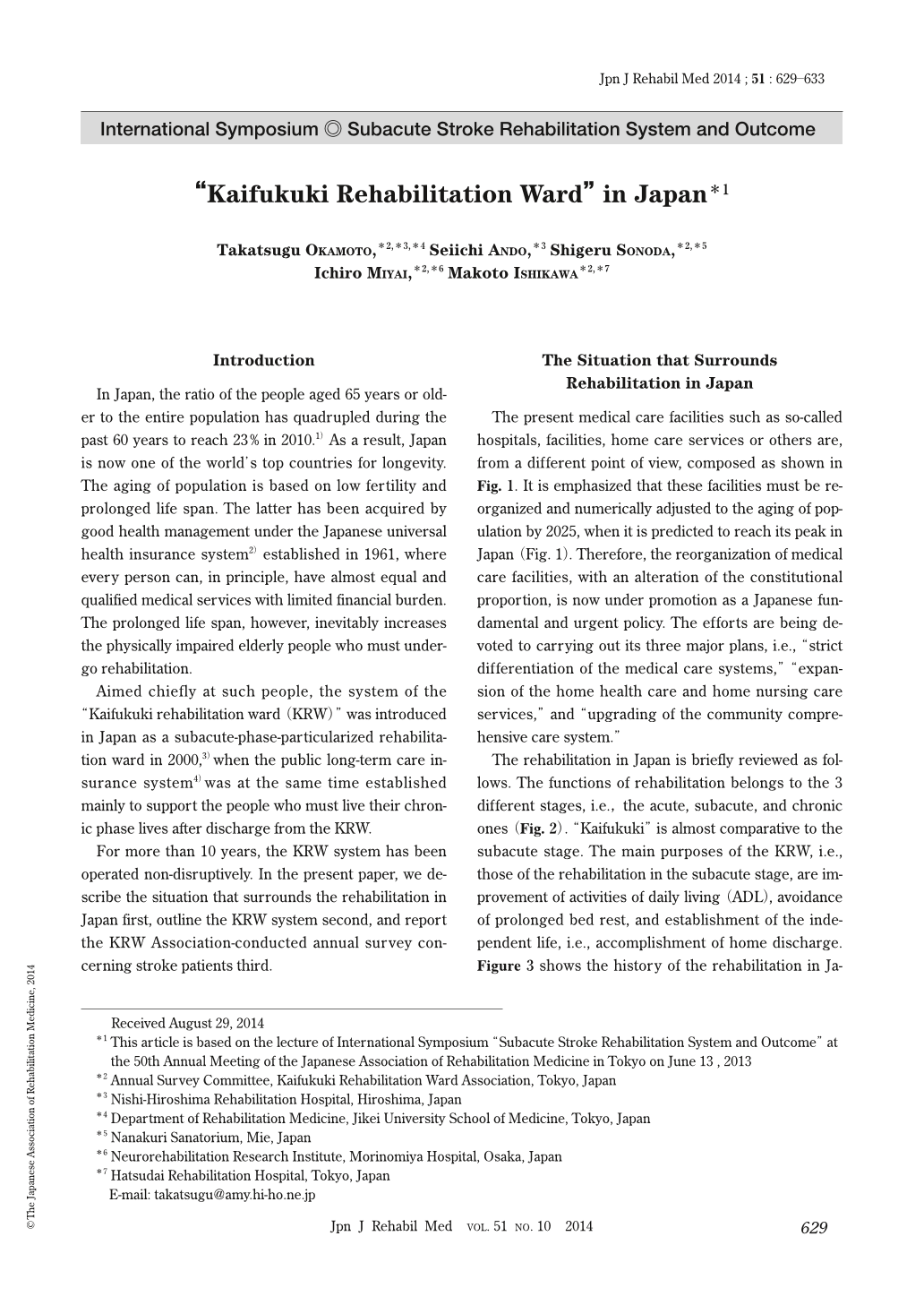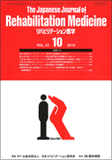Japanese
English
- 販売していません
- Abstract 文献概要
- 1ページ目 Look Inside
- 参考文献 Reference
Introduction
In Japan, the ratio of the people aged 65 years or older to the entire population has quadrupled during the past 60 years to reach 23% in 2010.1) As a result, Japan is now one of the world's top countries for longevity. The aging of population is based on low fertility and prolonged life span. The latter has been acquired by good health management under the Japanese universal health insurance system2) established in 1961, where every person can, in principle, have almost equal and qualified medical services with limited financial burden. The prolonged life span, however, inevitably increases the physically impaired elderly people who must undergo rehabilitation.
Aimed chiefly at such people, the system of the “Kaifukuki rehabilitation ward (KRW)” was introduced in Japan as a subacute-phase-particularized rehabilitation ward in 2000,3) when the public long-term care insurance system4) was at the same time established mainly to support the people who must live their chronic phase lives after discharge from the KRW.
Introduction
In Japan, the ratio of the people aged 65 years or older to the entire population has quadrupled during the past 60 years to reach 23% in 2010.1) As a result, Japan is now one of the world's top countries for longevity. The aging of population is based on low fertility and prolonged life span. The latter has been acquired by good health management under the Japanese universal health insurance system2) established in 1961, where every person can, in principle, have almost equal and qualified medical services with limited financial burden. The prolonged life span, however, inevitably increases the physically impaired elderly people who must undergo rehabilitation.
Aimed chiefly at such people, the system of the “Kaifukuki rehabilitation ward (KRW)” was introduced in Japan as a subacute-phase-particularized rehabilitation ward in 2000,3) when the public long-term care insurance system4) was at the same time established mainly to support the people who must live their chronic phase lives after discharge from the KRW.

Copyright © 2014, The Japanese Association of Rehabilitation Medicine. All rights reserved.


